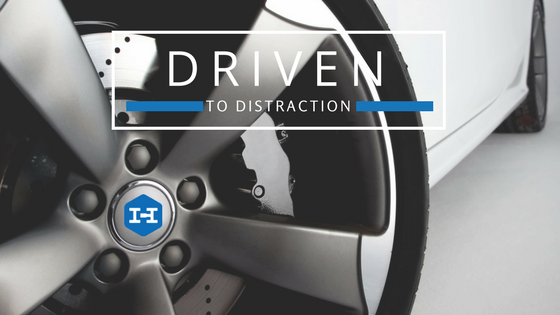Driven to Distraction
One of the things I find most irritating is dealing with cars and businesses. It’s detailed, not particularly obvious, and keeping track of it is onerous. And clients ask me about it ALL THE TIME.
So… a perfect topic for a blog post… it lets me rant, and in future, I can just point to this post!
The basic issue
Everybody in business wants to write off their car expenses. Fair enough. Within reason.
The basic principle is simple: if you incur expenses in earning income, then the expenses can be deducted from that income when working out your taxes. This applies to the cost of driving around for business. And also for an employee who is responsible for his/her own travel costs.
Here are the things that make it more complicated:
- People drive their cars in their personal lives as well as for work. (Per CRA, your daily commute is personal.)
- The business you’re driving for (which may be a corporation) isn’t necessarily who pays for the car.
- If the business pays for the car, then somebody who gets to drive it “off duty” is enjoying use of a corporate asset.
- Sometimes people like to drive a car that’s nicer than what is justified purely by business needs. (CRA defines this as a car costing more than $30k. They haven’t changed this in years. Luxury ain’t what it used to be.)
And the rules differ if you operate your business in a proprietorship, or via a corporation.
Keeping it simple…
You may remember (and if you don’t, click here) that when you run your business in a proprietorship, you own all the assets used in the business. And you get to deduct all the expenses you incur in running your business.
So…. basically, add up the total costs of running your car (including capital cost allowance, a proxy for wear-and-tear). Work out how many of the miles you drove in the year were for business vs personal, and you can deduct that percentage of the costs. Should be simple. Same applies for a partnership.
It’s also the same if you’re an employee who has to cover your own travel costs. Except that – to claim the deduction – you must have a signed T2200 form from your employer stating that fact.
The only complexity is that the wear-and-tear deduction is restricted if your car cost more than $30k. Don’t worry, our software will do that for you….
Getting more complicated…
If you run your business in a corporation, there are two ways in which you get to deduct the car business costs. The following applies to both the business owner (who works in the business) and non-owner employees.
What we recommend: Drive your own car. Keep track of the miles you drive for business. The company can reimburse you at a rate of $0.55/km (HST included; the rate drops after 5,000km). You don’t pay tax on the reimbursement, as CRA’s worked out this rate to compensate you for the fully-loaded per-km cost of driving your car – so you’re just being made whole. However, the company’s paying this cost in order to run the business, so can deduct it.
More complex: the company owns or leases the car, and pay for everything. But then…. the driver is enjoying personal use of a company asset. So this counts as a taxable benefit (unless you have to leave it at work at all times after hours, or if it’s the type of vehicle you can’t really drive in your personal life). Without boring you with details – because they’re boring – there’s a 2-part calculation of how much tax you’ll pay, which mainly depends on the cost of the car and how much of your mileage is personal.
This number gets put on your T4 slip, and you pay tax on it. Example: If the company gives you a $30k car, and you drive about 20,000km a year of which 11,000 are personal, you’re paying as much tax as if the company had given you an extra $10k bonus.
There are also hybrid situations where the company pays the driver a flat rate allowance and the driver covers the expenses. Basically, the allowance gets taxed but the expenses can be deducted.
Sounds like a make-work project.
Well, yes. If you want to deduct actual costs, you have to keep receipts etc. At the very least you are in for recording your mileage under any scenario. And – if CRA audit you – then you need to be able to demonstrate that you have maintained a detailed log. They’re not very accommodating on this. See here for info from the CRA to get the point…
Wow.
Quite. Here’s where we stand on this stuff. We’re trying to make life easier.
- Find an app you like that will help you track your mileage. Our current favourite: MileIQ (Click here for details). Until we found this, I had to reconstruct mileage from the appointments in my calendar every quarter. The app is way easier and should keep CRA happy.
- If you have to track costs, keep a dedicated envelope in your glovebox. Put all gas, etc. receipts in it, before you leave the gas station.
- We’re not a fan of company cars. Many people like the prestige of saying they have one. But – once that $10k taxable benefit’s been taken into account – your taxes and take-home will end up being remarkably close to what they would have been if you the company paid you $10k more, you paid for your own car, and the company reimbursed you per km. Which is much MUCH MUCH simpler!
- Try to use the method that’s described for your situation. CRA frown on proprietors simply trying to deduct $0.55 per km. Even if the number would be much the same under the same method…. it’s a nuisance to have to try to defend it.
- Keep it simple. Some of our clients (you know who you are!) like to buy a car in the company then sell it to themselves after a couple of years, on the basis that the company’s paid for the years when the value drops most. Again, the tax savings end up being minimal – and you may also pay significant re-registration fees, sales taxes, accountant fees…
Finally, I’m often asked: “Should I buy or lease my car?” The answer is: “Yes.” Do what’s best based on your situation, and the taxes will sort themselves out much the same.
Thank you. I feel better for that.
~ Jules

